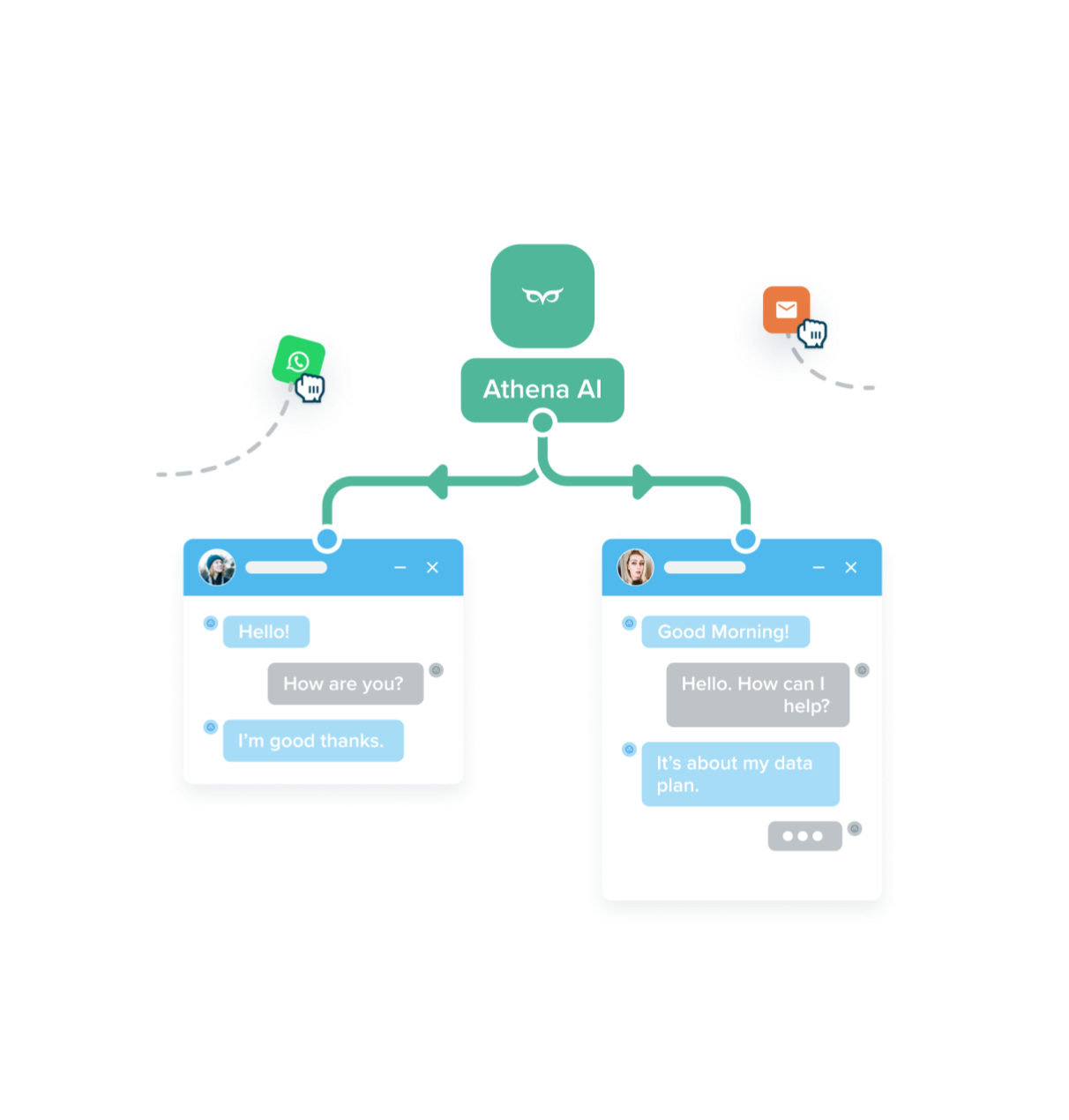Helpdesk Software
At the heart of nearly all businesses lies communication. From addressing customer service inquiries to managing internal IT requests, businesses often require effective systems to handle these interactions. Helpdesk software serves as a versatile tool designed to streamline the organization, management, and response to service-related inquiries. It caters to a spectrum of needs, handling both external requests from customers and internal service inquiries from team members; it stands out as one of the most effective methods to streamline these processes.
In this article, we’ll explain everything you need to know about Helpdesk software and explain to you what different functionalities and features you should look for in a Helpdesk tool.
What is Helpdesk Software?
Helpdesk software is a tool used by organizations to provide customer support, manage inquiries, and resolve issues efficiently. It serves as a centralized platform for receiving, organizing, tracking, and responding to customer queries, complaints, and requests for assistance.
Employing a Helpdesk platform can significantly enhance the customer experience, as evidenced by the fact that 75% of customers value consistency across all engagement channels with a company, be it through social media, in-person interactions, phone calls, and more. By consolidating all customer support interactions into a single omnichannel tool, an Omni helpdesk fosters a seamless experience.
It includes features such as a ticketing system for logging and tracking customer inquiries, various communication channels like email and chat, ticket management tools for prioritizing and assigning tasks, a knowledge base for self-service support, automation capabilities to streamline repetitive tasks, reporting and analytics for tracking performance metrics, and integration with other business systems for seamless workflow.
The right Helpdesk software tool can represent a massive improvement in the streamlining of customer support operations and a series of benefits:
- Enhanced customer support and issue resolution.
- Improved communication between support teams and customers.
- Faster response times leading to higher customer satisfaction.
- Streamlined workflows through automation.
- Reduction in manual effort, increasing productivity.
- Tracking of key metrics for continuous improvement.
- Centralized platform for managing inquiries efficiently.
- Facilitation of self-service support through knowledge bases.
- Integration with other business systems for seamless workflow.
- Delivery of better customer experiences overall.
Types of Helpdesk Software
Enterprise Help Desks
Designed for large organizations, enterprise help desks operate at a massive scale and offer a wide range of features. These include asset and account management, knowledge bases, and collaboration tools tailored for IT tech support. With either no or very high limits on users, they are an optimal choice for enterprises needing support for both employees and customers.
Internal and External Help Desks (Service Desks)
Internal help desks, also referred to as service desks, cater to supporting internal teams like IT and HR in serving employees. Functioning similarly to external help desks, the key distinction lies in who utilizes them for support requests: employees for the former and customers for the latter.
Web-based Help Desks
Web-based help desk solutions are Software as a Service (SaaS) platforms hosted on the provider’s servers. Sold through monthly or annual subscriptions covering maintenance, updates, and security costs, they are ideal for small and mid-sized businesses lacking the budget or infrastructure for on-site help desk systems.
On-premise and Cloud-based Helpdesk Software
Both on-premise and cloud-based help desk software share core functionalities, but they differ in where the underlying software is hosted. On-premise help desks host software internally, catering to companies with stringent data security needs. Although customizable to integrate with internal systems, they require ongoing internal maintenance. In contrast, cloud-based help desk software stores data on remote servers owned by the software vendor or a third party, facilitating scalability without the burden of software maintenance.
Open Source and Closed Source Helpdesk Software
Open source help desk software allows users and organizations to modify the underlying code, offering extensive customization options for skilled programmers. Closed source help desk apps, proprietary in nature, limit modifications to software developers. Despite this, both types provide avenues for customization through APIs, SDKs, third-party app integrations, and plugins.
But what are the most important features of a Helpdesk software platform? Let’s see it in the next section.
Best features to look for in a Helpdesk software solution
Helpdesk software systematically manages customer inquiries and problems through a ticketing system, covering intake, management, response, and resolution. This ensures that support agents and other stakeholders involved can monitor the issue’s progress until it is successfully resolved, providing updates along the way.
Customer requests can originate from various channels such as social media, phone, live chat, text, or email. Omni support allows organizations to select the channels that best suit their customers’ preferences.
Self-service features
Common self-service options include knowledge bases and customer portals. Effective helpdesk software offers both, empowering service teams to utilize their expertise in assisting customers and colleagues through a centralized portal.
Monitoring and analysis
Interaction Analytics and tracking capabilities enable managers to gain insights into their team’s performance, customer satisfaction levels, and other critical aspects. This information can be leveraged to enhance service operations and address customer pain points effectively.
Automation, applications and integration
Helpdesk agents leverage various features such as applications, integrations, and automation to tailor their work environment to suit existing tools and workflows. These functionalities enable agents to automate ticket management, streamline internal collaboration, access relevant customer data, and more.
If you enjoyed reading this, you might also be interested in…
Call Center IVR
Customer Interaction Management
Contact Center Artificial Intelligence
Customer Service AI
Conversational AI
Contact Center Artificial Intelligence
AI Agent
Omni
Omni Contact Center
CCaaS


